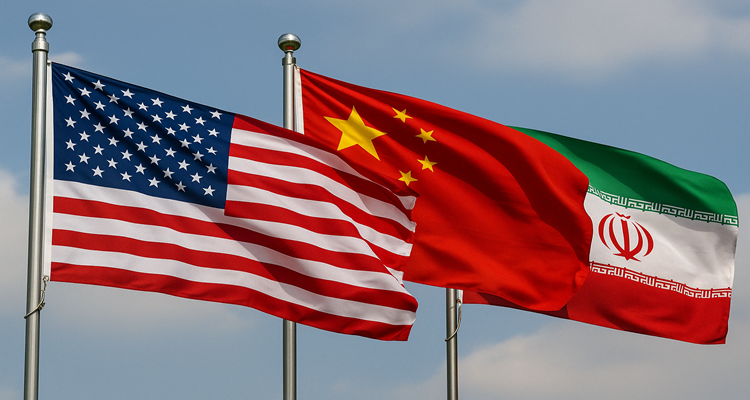Hidden Threats in Chinese Inverters Alarm U.S. Grid
U.S. officials are raising alarms over undocumented communication devices in Chinese inverters tied to the power grid. Experts warn of potential cybersecurity threats to critical energy infrastructure.
Hidden Threats in Chinese Inverters Alarm U.S. Grid
As the U.S. transitions toward renewable energy, new concerns are surfacing over what’s powering the green revolution—not solar panels or wind turbines, but the inverters connecting them to the electric grid. Now, federal officials are reevaluating the security of these crucial devices, especially those made in China.
Over the past year, cybersecurity experts working with U.S. agencies have uncovered undocumented communication hardware embedded in Chinese-manufactured inverters—devices that convert direct current (DC) electricity from renewable sources into alternating current (AC) suitable for the power grid. These inverters are widespread not just in solar and wind installations, but also in home batteries, EV chargers, and even heat pumps.
Chinese Inverters Under the Microscope
In recent months, several Chinese-made inverters examined by U.S. analysts were found to contain rogue components—such as cellular radios—not listed in any official product documentation. These hidden modules create alternative pathways for remote communication, potentially allowing them to bypass network firewalls and gain unauthorized access to sensitive energy systems.
“The issue isn’t just about spying—it’s about control,” said a senior cybersecurity consultant familiar with the ongoing investigations. “If these backdoors are exploited, entire sections of the grid could be disrupted.”
Legislative Moves to Limit Chinese Influence
In response, U.S. lawmakers are taking preemptive action. In February, the Decoupling from Foreign Adversarial Battery Dependence Act was introduced, aiming to ban the Department of Homeland Security from sourcing batteries from certain Chinese companies by 2027. Among the blacklisted names are CATL, BYD, Gotion, and Envision Energy—key players in the global battery supply chain.
Though the bill has yet to pass, utilities are already adapting. Florida Power & Light, one of the country’s largest energy providers, is reportedly minimizing its use of Chinese inverters by turning to alternative suppliers.
A Department of Energy (DOE) spokesperson emphasized efforts to build resilient domestic supply chains, noting that “as more U.S. manufacturing takes root, the government is working to integrate trusted technology into the national grid.”
Huawei’s Dominance Raises Red Flags
At the center of this debate is Huawei, the world’s largest inverter supplier, which held 29% of the global market share in 2022. Although Huawei exited the U.S. inverter market in 2019—shortly after its 5G equipment was banned—its devices still dominate grids across Europe and Asia.
Some energy firms are distancing themselves. German solar developer 1Komma5 has opted to avoid Huawei inverters altogether. CEO Philipp Schroeder warned, “The critical mass is so much larger now. Shutting down inverters across Europe could create widespread blackouts.”
Security experts also point to Chinese national laws that require local companies to cooperate with the government’s intelligence services. This legal obligation means the Chinese state could theoretically issue commands to inverters located abroad, heightening fears of foreign interference in critical infrastructure.
Global Reactions: Europe and Beyond
The threat isn’t just theoretical. In November, a dispute between inverter manufacturers Sol-Ark and Deye led to devices being remotely shut down from China, impacting users in the U.S. and elsewhere. Though details remain unclear, the incident served as a stark reminder of how global supply chains can be weaponized.
European nations are taking precautions. Lithuania has passed legislation banning remote Chinese access to energy systems over 100 kilowatts. Estonia is mulling similar bans, warning that the country risks becoming vulnerable to political coercion via its energy infrastructure. In the U.K., officials are currently reviewing the use of Chinese technology in national power systems.
Behind the Curve: Energy Sector’s Lag in Cyber Defense
While telecom and semiconductor industries have taken significant steps to curb reliance on Chinese tech, the energy sector has lagged. One reason is regulatory blind spots: smaller installations like rooftop solar systems often fall below the thresholds where strict cybersecurity rules apply. Yet these small units, in aggregate, now represent a meaningful share of grid power.
Uri Sadot, cyber director at Israeli firm SolarEdge, underscored the risk: “If someone gains access to enough of these devices simultaneously, the result could be catastrophic—not just outages, but destabilization of entire regional grids.”
Conclusion: A Call for Vigilance and Strategic Independence
The rise of renewable energy promises a cleaner, more sustainable future—but it also introduces new vulnerabilities that can’t be ignored. As Chinese manufacturers dominate the global inverter market, the U.S. and its allies must reassess what “clean energy” truly costs. Ensuring the integrity of power systems now means confronting the hidden threats lurking within them.
In a rapidly electrifying world, security must evolve alongside sustainability. Governments, utilities, and consumers all play a role in demanding transparency, investing in secure alternatives, and reducing strategic dependencies before they become points of failure.
Disclaimer:
This article is based on current investigative reports, expert commentary, and available data. It is intended for informational purposes only and does not imply wrongdoing by any specific entity. The situation continues to develop, and readers are encouraged to follow official sources for ongoing updates.
source: The Economic Times











